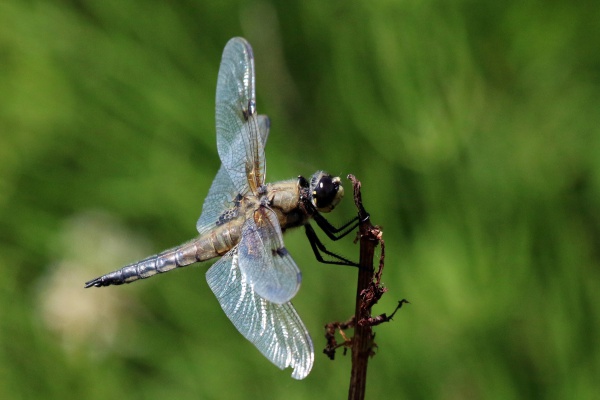Facts About Four-spotted chaser
The Libellula quadrimaculata, commonly known as the four-spotted chaser in Europe and the four-spotted skimmer in North America, is a dragonfly belonging to the Libellulidae family. These remarkable insects are found across Europe, Asia, and North America. In the United Kingdom, adults are usually sighted from April to early September, while in Ireland, they appear from mid-May to mid-August. The larvae take approximately two years to mature into adults.
Adult four-spotted chasers primarily feed on mosquitoes, gnats, and midges. The larvae, on the other hand, consume other aquatic insect larvae and tadpoles. There is also a variant form known as praenubila Newman, characterized by more pronounced wing spots. This variant is believed to be more common in Europe, potentially due to varying water temperatures during larval development. Interesting fact: the four-spotted skimmer is the state insect of Alaska!
These dragonflies thrive in habitats such as ponds, vernal pools, and slow-moving rivers, with their peak activity occurring in June and July. Male four-spotted chasers are noted for their aggressive territorial behavior, often perching in prominent locations around water bodies to monitor for prey. Mating occurs in flight, and females lay their eggs on floating vegetation. Despite their territorial disposition, these dragonflies are typically more approachable compared to species like the Broad-bodied Chaser.
Regarding predators, the larger emperor dragonfly (Anax imperator) and the green tiger beetle (Cicindela campestris) are known to prey on the four-spotted chaser.

 Ireland
Ireland